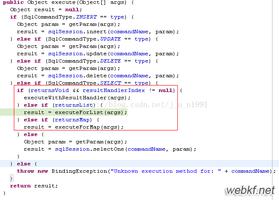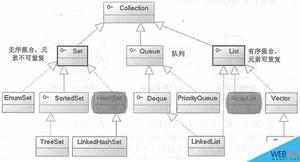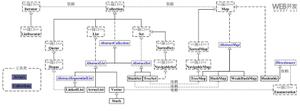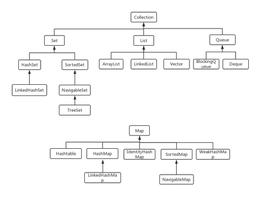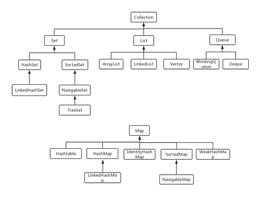Java 8中Collection转为Map的方法

Java 8中java.util.stream.Collectors提供了几个方法可用于把Collection转为Map结构,本文记录了个人对其中三个的理解。
| Method | Return Type |
|---|---|
| groupingBy | Map<K, List<T>> |
| partitioningBy | Map<Boolean, List<T>> |
| toMap | Map<K,U> |
1. 环境
Java: jdk1.8.0_144
2. 特性说明
Student.java
public class Student { private String studentNo;
private String name;
private Boolean gender;
private int age;
public Student(String studentNo, String name, Boolean gender, int age) {
this.studentNo = studentNo;
this.name = name;
this.gender = gender;
this.age = age;
}
public String getStudentNo() {
return studentNo;
}
public String getName() {
return name;
}
public Boolean getGender() {
return gender;
}
public int getAge() {
return age;
}
@Override
public String toString() {
return String.format("Student [studentNo=%s, name=%s, gender=%s, age=%s]", studentNo, name, gender, age);
}
}
fakeStudent()方法
private List<Student> fakeStudent() { List<Student> students = new ArrayList<>();
students.add(new Student("1", "name1", false, 2));
students.add(new Student("2", "name2", false, 2));
students.add(new Student("3", "name2", null, 2));
students.add(new Student("4", "name4", true, 2));
students.add(new Student(null, "name5", true, 2));
return students;
}
2.1. Collectors.groupingBy
public static <T, K> Collector<T, ?, Map<K, List<T>>> groupingBy(Function<? super T, ? extends K> classifier) { return groupingBy(classifier, toList());
}
a) 按Function的返回值把集合分组,并以之为Key,对应的列表为Value,返回Map
b) 若Key对应的列表为空时,返回的Map中将不包含该Key
c) 若Function的返回值为Null,抛出NullPointerException
@Test(expected = NullPointerException.class)public void shouldThrowNPEWhenGroupingByNullKey() {
fakeStudent().stream().collect(Collectors.groupingBy(Student::getStudentNo));
}
2.2. Collectors.partitioningBy
public static <T> Collector<T, ?, Map<Boolean, List<T>>> partitioningBy(Predicate<? super T> predicate) { return partitioningBy(predicate, toList());
}
a) 按Predicate的返回值把集合分为两组,符合条件的列表以true为Key,不符合的列表以false为Key
b) 若Predicate的返回值为Null,抛出NullPointerException
@Test(expected = NullPointerException.class)public void shouldReturnMapWhenPartitioningByNullKey() {
fakeStudent().stream().collect(Collectors.partitioningBy(Student::getGender));
}
2.3. Collectors.toMap
public static <T, K, U> Collector<T, ?, Map<K,U>> toMap(Function<? super T, ? extends K> keyMapper, Function<? super T, ? extends U> valueMapper) { return toMap(keyMapper, valueMapper, throwingMerger(), HashMap::new);
}
a) 以keyMapper的Function返回值为Key且以valueMapper的Function返回值为Value,形成Map
b) 若Key为Null,依然可以正确返回
@Testpublic void shouldReturnMapWhenToMapNullKey() {
Map<String, Student> map = fakeStudent().stream()
.collect(Collectors.toMap(Student::getStudentNo, Function.identity()));
assertEquals("{null=Student [studentNo=null, name=name5, gender=true, age=2], "
+ "1=Student [studentNo=1, name=name1, gender=false, age=2], "
+ "2=Student [studentNo=2, name=name2, gender=false, age=2], "
+ "3=Student [studentNo=3, name=name2, gender=null, age=2], "
+ "4=Student [studentNo=4, name=name4, gender=true, age=2]}", map.toString());
}
c) 若Key值出现重复,默认抛出IllegalStateException
@Testpublic void shouldThrowIllegalStateExceptionWhenToMapDuplicateKey() {
Map<String, Student> map = null;
try {
map = fakeStudent().stream().collect(Collectors.toMap(Student::getName, Function.identity()));
} catch (Exception e) {
assertTrue(e instanceof IllegalStateException);
assertEquals("Duplicate key Student [studentNo=2, name=name2, gender=false, age=2]", e.getMessage());
}
assertNull(map);
}
若需要避免Duplicate Key的问题,可以有两个选择
- 确定toMap的冲突策略,例如指定前者
@Testpublic void shouldReturnMapWhenToMapDuplicateKey() {
Map<String, Student> map = fakeStudent().stream()
.collect(Collectors.toMap(Student::getName, Function.identity(), (student1, student2) -> student1));
assertEquals("{name5=Student [studentNo=null, name=name5, gender=true, age=2], "
+ "name4=Student [studentNo=4, name=name4, gender=true, age=2], "
+ "name2=Student [studentNo=2, name=name2, gender=false, age=2], "
+ "name1=Student [studentNo=1, name=name1, gender=false, age=2]}", map.toString());
}
- 放弃toMap方法,而利用collect
@Testpublic void shouldReturnMapWhenCollectDuplicateKey() {
Map<String, Student> map = fakeStudent().stream().collect(HashMap::new, (m, v) -> m.put(v.getName(), v),
HashMap::putAll);
assertEquals("{name5=Student [studentNo=null, name=name5, gender=true, age=2], "
+ "name4=Student [studentNo=4, name=name4, gender=true, age=2], "
+ "name2=Student [studentNo=3, name=name2, gender=null, age=2], "
+ "name1=Student [studentNo=1, name=name1, gender=false, age=2]}", map.toString());
}
d) 若Value为Null,则抛出NullPointerException
@Test(expected = NullPointerException.class)public void shouldThrowNPEWhenToMapNullValue() {
fakeStudent().stream().collect(Collectors.toMap(Student::getStudentNo, Student::getGender));
}
3. 结语
- Collectors.groupingBy/Collectors.partitioningBy中心思想都是把原来集合以某种条件分组,分组条件不能为Null;只是Collectors.partitioningBy的分组条件是断言,且永远返回true/false对应的两组值,它们对应的Value可能是空列表,而Collectors.groupingBy的分组结果是空列表则会被抛弃
@Testpublic void shouldReturnSameMapWhenGroupingByAndPartitioningBy() {
List<Student> students = fakeStudent().stream().filter(student -> student.getGender() != null)
.collect(Collectors.toList());
Map<Boolean, List<Student>> groupingByMap = students.stream()
.collect(Collectors.groupingBy(Student::getGender));
Map<Boolean, List<Student>> partitioningByMap = students.stream()
.collect(Collectors.partitioningBy(Student::getGender));
assertEquals("{false=[Student [studentNo=1, name=name1, gender=false, age=2], "
+ "Student [studentNo=2, name=name2, gender=false, age=2]], "
+ "true=[Student [studentNo=4, name=name4, gender=true, age=2], "
+ "Student [studentNo=null, name=name5, gender=true, age=2]]}", groupingByMap.toString());
assertEquals(groupingByMap.toString(), partitioningByMap.toString());
}
@Test
public void shouldReturnDifferentMapWhenGroupingByAndPartitioningBy() {
Function<Student, Boolean> function = student -> student.getAge() > 3;
List<Student> students = fakeStudent();
Map<Boolean, List<Student>> groupingByMap = students.stream().collect(Collectors.groupingBy(function));
Map<Boolean, List<Student>> partitioningByMap = students.stream()
.collect(Collectors.partitioningBy(function::apply));
assertEquals("{false=[Student [studentNo=1, name=name1, gender=false, age=2], "
+ "Student [studentNo=2, name=name2, gender=false, age=2], "
+ "Student [studentNo=3, name=name2, gender=null, age=2], "
+ "Student [studentNo=4, name=name4, gender=true, age=2], "
+ "Student [studentNo=null, name=name5, gender=true, age=2]]}", groupingByMap.toString());
assertEquals(
"{false=[Student [studentNo=1, name=name1, gender=false, age=2], "
+ "Student [studentNo=2, name=name2, gender=false, age=2], "
+ "Student [studentNo=3, name=name2, gender=null, age=2], "
+ "Student [studentNo=4, name=name4, gender=true, age=2], "
+ "Student [studentNo=null, name=name5, gender=true, age=2]], true=[]}",
partitioningByMap.toString());
}
- Collectors.toMap与Collectors.groupingBy/Collectors.partitioningBy不一样,它只负责把集合中的元素根据某种形式拆解为一个Map,该Map的key可以为Null但不允许重复,同时Map的Value不可以为Null
4. 参考资料
- 附代码地址
https://github.com/hivsuper/study/blob/master/study-java8/src/test/java/org/lxp/java8/map/CollectionToMapTest.java - https://stackoverflow.com/questions/27993604/whats-the-purpose-of-partitioningby
以上是 Java 8中Collection转为Map的方法 的全部内容, 来源链接: utcz.com/z/391856.html

